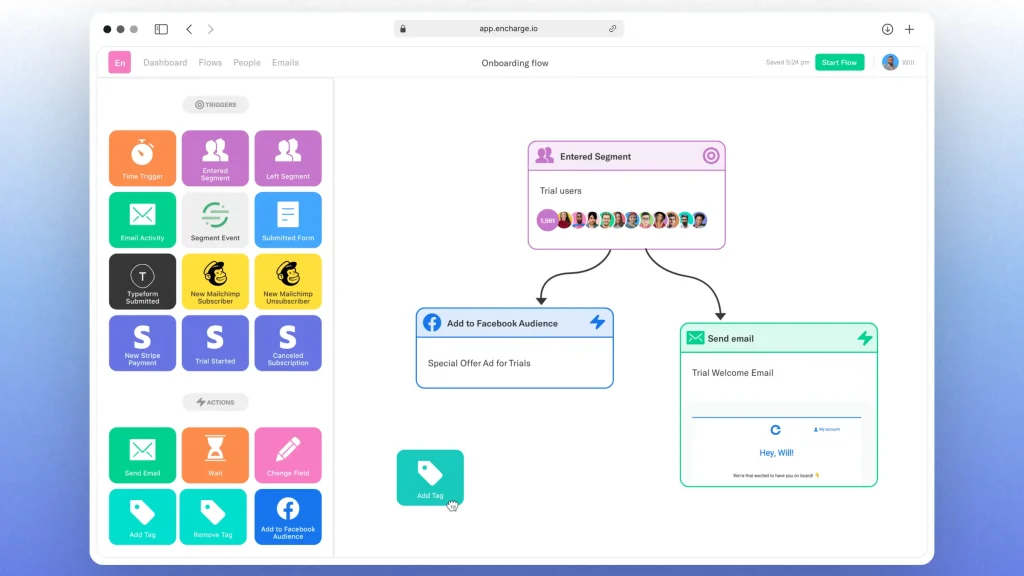Back in 2012, Pardot was acquired for $95.5M by ExactTarget…
And just 1 year later, Salesforce spent $2.5B acquiring them.
But over the past few months, there’s been a lot of quiet movement inside Salesforce’s ecosystem, and Pardot ended up caught in the middle of it. If you’ve been using Pardot for years, you’ve probably already felt the shift long before anyone said it out loud.
Pardot is being folded deeper into Salesforce’s marketing suite, and the standalone product is effectively being sunset. It’s not a dramatic overnight shutdown, but the direction is clear: Salesforce wants everything under one unified “Marketing Cloud” umbrella.
For most teams, the real impact isn’t the rebrand. It’s the uncertainty that comes with it.
- Will support get thinner over time?
- Will pricing change?
- Will features you rely on quietly disappear?
- Will the Salesforce-first workflow get even more rigid?
That’s usually the moment people start looking around.
If you’ve spoken with other marketers, you’ve probably heard the same thing we’re hearing on calls: teams want something that still works with Salesforce, still gives them real automation power, but doesn’t drag them through six months of onboarding or require a dedicated admin to operate.
That gap is exactly why a lot of Pardot users started landing on Encharge.
What Pardot should have become… already exists. It’s called Encharge 🙂
Encharge is what a lot of teams expected Pardot to evolve into: powerful automation, a clean Salesforce sync, and a workspace that doesn’t require a full-time admin.
- Two way Salesforce sync
- Clear, simple pricing
- No onboarding fees
- Built for real marketing teams
Before
“We used Pardot because it worked with Salesforce, but everything felt heavier than it needed to be.”
After
Clean, reliable Salesforce sync.
Bonus
Automation your whole team understands.
Encharge keeps the power of Pardot, without the friction.
What happened to Pardot?
Answer: Pardot hasn’t fully “died” but it’s no longer its own product.
Salesforce folded it into Marketing Cloud under the name Account Engagement, and development has slowed down a lot.
So yes, it technically still works.
But the direction is clear: it’s being absorbed, not improved.
Most teams are feeling the effects already:
- fewer updates
- more complexity
- more focus on large enterprise use cases
- less attention to everyday marketing workflows
That’s why so many long time Pardot users are starting to explore simpler, faster options that still work well with Salesforce.
Why Pardot Users Look For Alternatives
Unfortunately, when a tool gets absorbed into a bigger ecosystem, it stops evolving for people who aren’t the “ideal” enterprise customer. And most Pardot users aren’t multi-department Fortune 500 companies with an in-house Salesforce implementation partner.
They just want:
- clean two-way sync
- powerful automation that doesn’t require a full-time operator
- pricing that doesn’t explode
- a UI that doesn’t punish them
The irony is that Pardot users never needed a “bigger” tool… they needed a more usable one.
Where Most Pardot Users Go
This is the part where I’m tempted to say “switch to Encharge because it’s better” but that’s not the right way to think about it. The honest version is this:
Encharge ends up being what a lot of Pardot teams thought they were buying when they first signed up years ago.
- The Salesforce integration is fast and clean.
- The sync feels like it was built for real marketing workflows, not for Salesforce consultants.
- You don’t need onboarding specialists to understand what’s going on.
- You can build advanced flows without fighting the tool.
- And the pricing is predictable, which is not something Pardot users are used to.

Pardot users who move are mostly chasing the same thing:
reliability, clarity, no unpleasant surprises.
Encharge happened to be built around those exact constraints. Not as a marketing slogan, but because most of us hated the friction in tools like Pardot.
This shift at Salesforce is simply making more teams realize they finally have permission to explore something that feels lighter without losing the power they need.
What Pardot should have become… already exists. It’s called Encharge 🙂
Encharge is what a lot of teams expected Pardot to evolve into: powerful automation, a clean Salesforce sync, and a workspace that doesn’t require a full-time admin.
- Two way Salesforce sync
- Clear, simple pricing
- No onboarding fees
- Built for real marketing teams
Before
“We used Pardot because it worked with Salesforce, but everything felt heavier than it needed to be.”
After
Clean, reliable Salesforce sync.
Bonus
Automation your whole team understands.
Encharge keeps the power of Pardot, without the friction.
What ex-Pardot Teams are Doing Now
Based on the calls and threads we’ve seen, there are three types of moves happening:
- Teams staying inside the Salesforce bubble but bracing for higher complexity and cost.
- Teams downgrading to “simpler” email tools and then realizing they lost automation power.
- Teams choosing tools like Encharge that sit in the sweet spot:
Still strong automation, still deep Salesforce sync… But faster to learn, faster to ship, and way easier to explain to everyone else in the company!
The third group is the fastest-growing right now.
Now, What’s Next For You?
You don’t need to move urgently, and you don’t need to panic.
But it is worth understanding what your world looks like 1-2 years from now.
Here’s a simple checklist Pardot users have been using on calls with us:
| Need | What Pardot users ask for |
|---|---|
| Fast evolution | A tool that updates faster than Salesforce. |
| Simple onboarding | No onboarding fees or long migrations. |
| Usable UI | A workspace even junior marketers can navigate. |
| Reliable sync | Salesforce sync that doesn’t break every few weeks. |
If the answer to any of those is yes, then exploring alternatives is a pretty rational step — whether that’s Encharge or something else entirely.
A Closing Note…
Pardot wasn’t a bad product. It just slowly became a product aimed at a shrinking type of user. The shift happening right now is giving everyone else a clean exit ramp.
If you want to understand what switching actually looks like, or what your data and automations would look like outside Pardot, we can walk you through it calmly. Not a sales pitch, just a clear view of your options.
FAQ: Salesforce Pardot
1. What is Salesforce Pardot called now?
Pardot has been renamed Marketing Cloud Account Engagement.
It’s no longer treated as a standalone product inside Salesforce.
2. What is the difference between Salesforce and Pardot?
- Salesforce is the CRM.
- Pardot was the marketing automation layer built to work on top of it.
Thin of it like this – Salesforce manages your data and sales pipeline, while Pardot handled email, automations, and lead nurturing.
→ Top email marketing automation tools for Salesforce
3. Did Salesforce sunset Pardot?
Not officially overnight, but it’s being absorbed. Development has slowed, features aren’t evolving, and everything is being rolled into the broader Marketing Cloud ecosystem.






